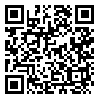Volume 20, Issue 82 (2023)
LIRE 2023, 20(82): 1-8 |
Back to browse issues page
Download citation:
BibTeX | RIS | EndNote | Medlars | ProCite | Reference Manager | RefWorks
Send citation to:



BibTeX | RIS | EndNote | Medlars | ProCite | Reference Manager | RefWorks
Send citation to:
Haji-Agha Babaie M R, Mohammadi G. Influence Methods of Tudeh Party on Contemporary Literature of Iran. LIRE 2023; 20 (82) :1-8
URL: http://lire.modares.ac.ir/article-41-66383-en.html
URL: http://lire.modares.ac.ir/article-41-66383-en.html
1- , ghazaleh.mohammadi.1051374@gmail.com
Abstract: (706 Views)
One of the influential tools in shaping thoughts is the utilization of literary content. Following this premise, the leaders of the Soviet Communist Party established specific principles and foundations to shape and disseminate literary content, which they communicated to their followers. Similarly, the leaders of the Tudeh Party in Iran endeavored to extend the approved characteristics of the Communist Party within contemporary Iranian literature by adhering to these guidelines. Leveraging the newspapers and publications at their disposal, they successfully aligned many poets and writers with their cause. The editors of these publications translated the theories of Marxist theorists, as well as the stories and poems of writers from the Soviet Union and Eastern European countries, to propagate these perspectives among Iranian writers. Priority in selecting Iranian literary works was given to those who were in some way supporters of the Tudeh Party or whose content aligned with the objectives of Marxist literature. The leaders of the Tudeh Party utilized various methods, including publishing articles on literary theory, introducing and promoting party-approved books, presenting Soviet writers as exemplary models, and highlighting Iranian authors whose ideas were endorsed by the party.
Keywords: Tudeh party and Contemporary Iranian Literature, Marxist teachings and literary publications, Tudeh party and poets and writers, The influence of left views on contemporary literature.
Article Type: مقالات علمی پژوهشی |
Subject:
Modern Poetry
Received: 2021/09/26 | Accepted: 2022/03/14 | Published: 2023/10/2
Received: 2021/09/26 | Accepted: 2022/03/14 | Published: 2023/10/2
Send email to the article author
| Rights and permissions | |
 |
This work is licensed under a Creative Commons Attribution-NonCommercial 4.0 International License. |








